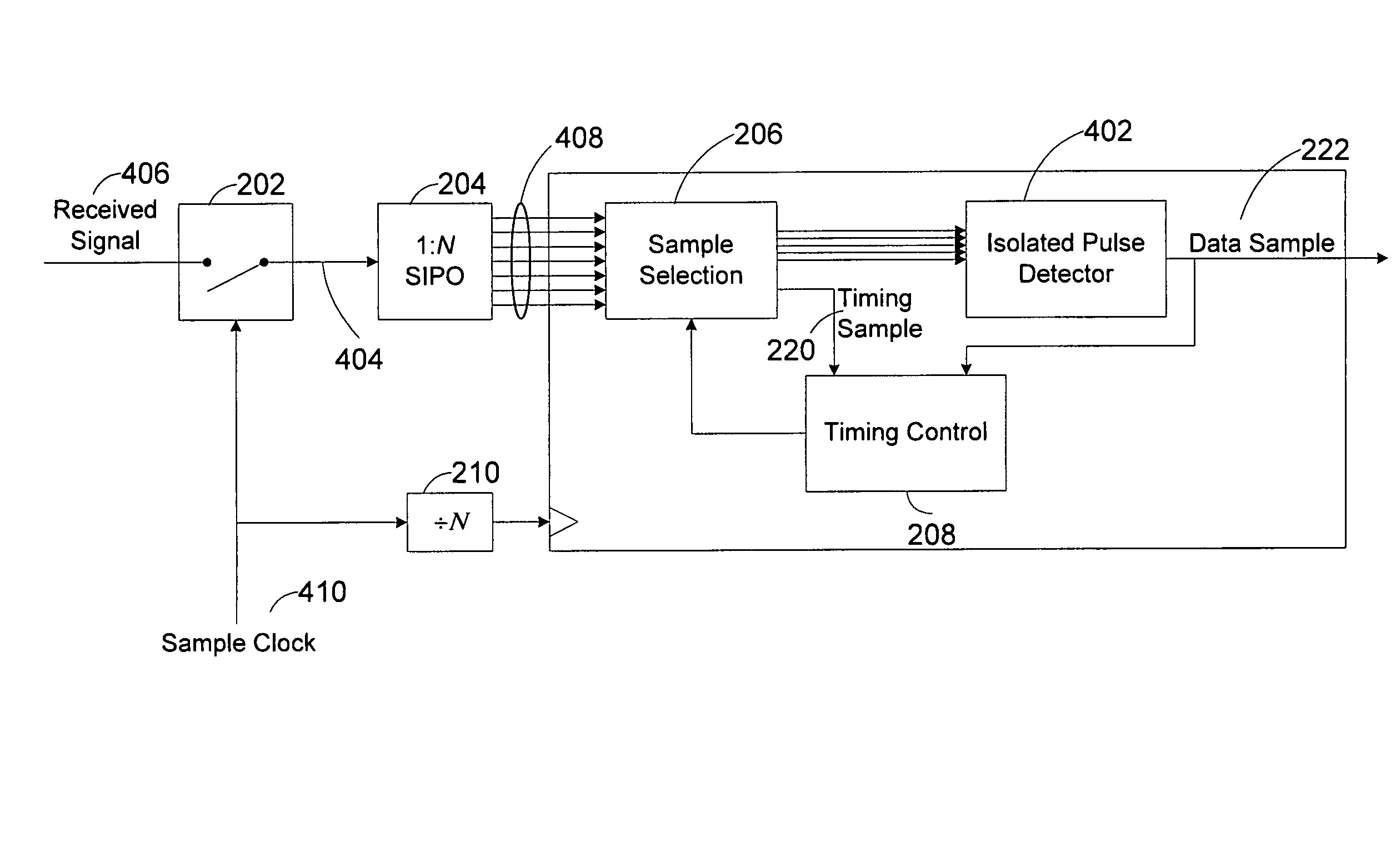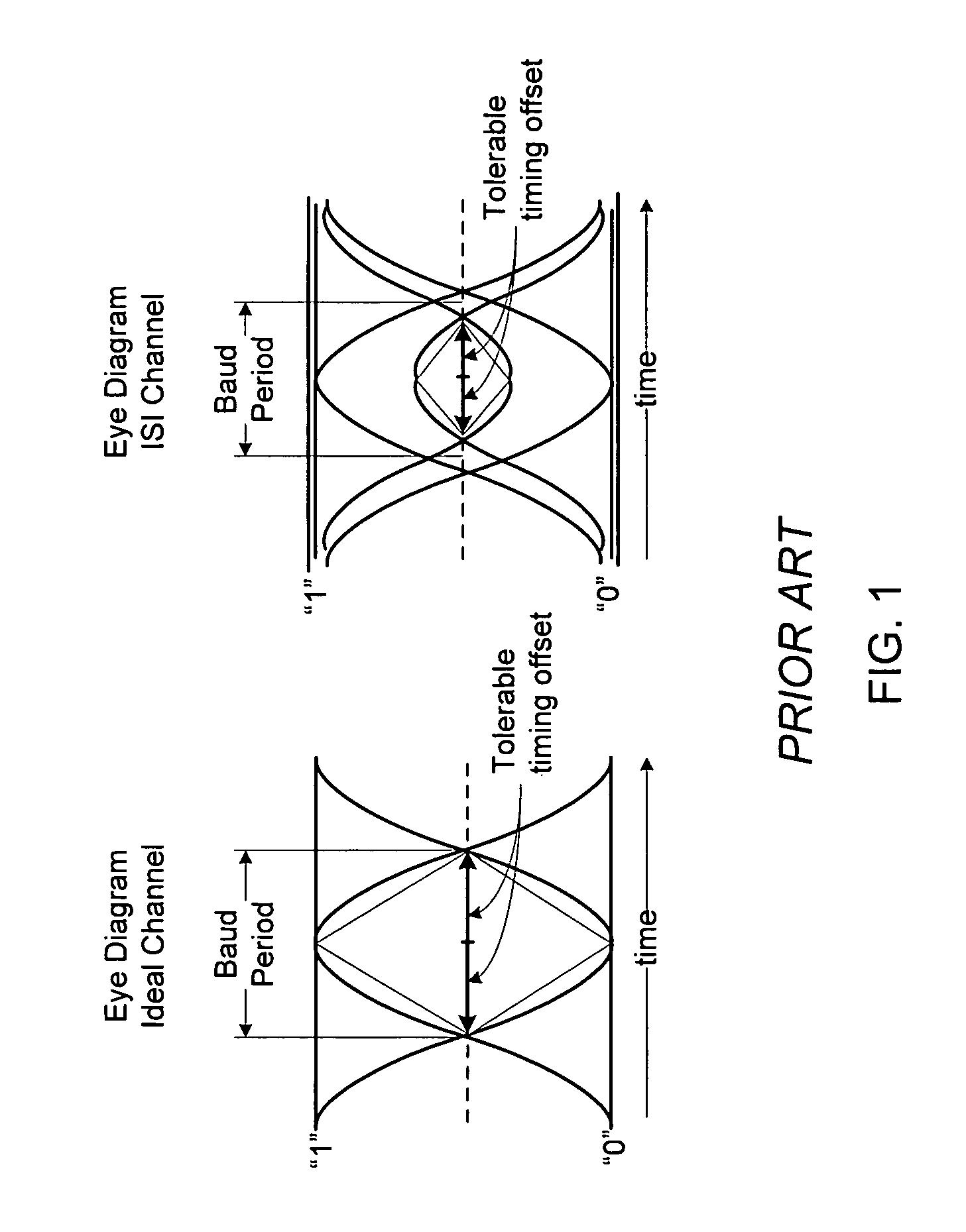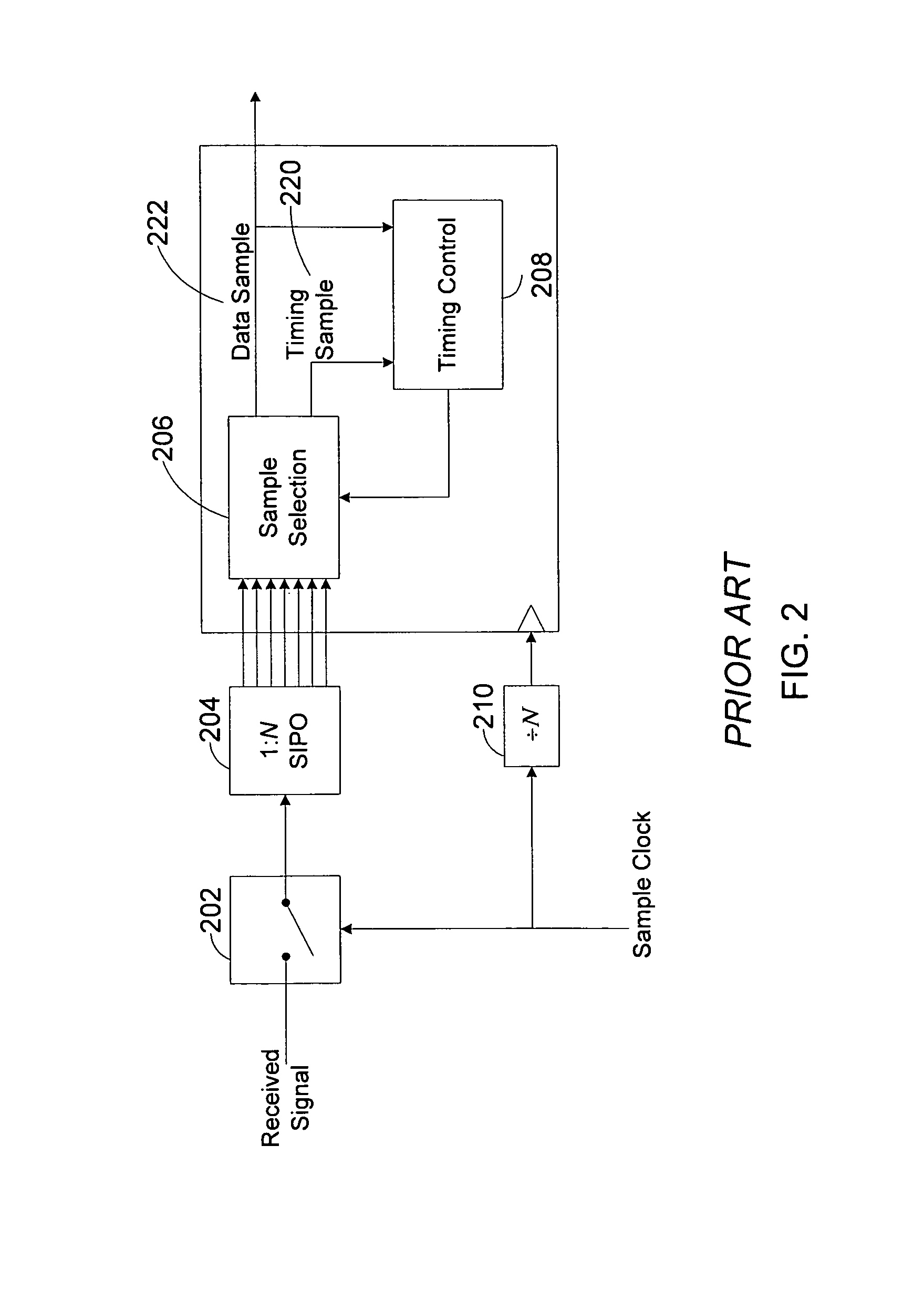Method and apparatus for SerDes jitter tolerance improvement
a serdes receiver and jitter tolerance technology, applied in the field of electronic devices, can solve problems such as data decoding errors and pulses missed, and achieve the effect of improving the jitter tolerance of serdes receivers and improving the recovery of data
- Summary
- Abstract
- Description
- Claims
- Application Information
AI Technical Summary
Benefits of technology
Problems solved by technology
Method used
Image
Examples
Embodiment Construction
[0033]Although particular embodiments are described herein, other embodiments, including embodiments that do not provide all of the benefits and features set forth herein, will be apparent to those of ordinary skill in the art.
[0034]FIG. 4 illustrates the receiver of FIG. 2 as modified to incorporate an Isolated Pulse Detector 402. The slicer 202 both samples and slices the received signal 406. In the figure, samples 404 of the received signal 406 are collected into groups of N signal samples 408 using the 1:N SIPO block 204. Typically, the parameter N defines the approximate number of samples made per baud interval. During asynchronous operation, typically one data sample 222 is selected per N signal samples 408, but occasionally, a data sample 222 will not be selected from a group of N signal samples 408, and occasionally, two data samples 222 will be selected from a group of N signal samples 408, depending on the asynchronous relationship between the local sample clock 410 and th...
PUM
 Login to View More
Login to View More Abstract
Description
Claims
Application Information
 Login to View More
Login to View More - R&D
- Intellectual Property
- Life Sciences
- Materials
- Tech Scout
- Unparalleled Data Quality
- Higher Quality Content
- 60% Fewer Hallucinations
Browse by: Latest US Patents, China's latest patents, Technical Efficacy Thesaurus, Application Domain, Technology Topic, Popular Technical Reports.
© 2025 PatSnap. All rights reserved.Legal|Privacy policy|Modern Slavery Act Transparency Statement|Sitemap|About US| Contact US: help@patsnap.com



